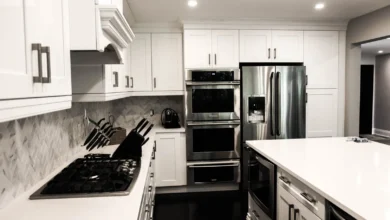How to Choose the Best House Design for Your Family’s Lifestyle

Choosing the right house design is one of the most significant decisions a family can make. A home is more than just a structure; it serves as a sanctuary, a place where memories are created, and a reflection of your lifestyle. This article delves into the essential factors to consider when selecting a house design that not only meets your family’s needs and preferences but also enhances its facade design, creating an inviting and functional space for daily living.
Understanding Your Family’s Lifestyle
- Assess Your Current and Future Needs
The first step in choosing a house design is to assess your family’s current and future needs. Consider the following questions:
- Size of the Family: How many family members do you currently have, and do you plan to expand? A growing family may need more bedrooms and flexible living spaces.
- Aging in Place: Will your family include elderly members? If so, consider designs that accommodate accessibility features, such as single-story layouts and wide doorways.
- Lifestyle Activities: What activities does your family enjoy? If you love cooking, an open kitchen with ample counter space may be essential. If you have children, consider spaces for play and study.
- Lifestyle and Functionality
Different families have different lifestyles that influence their ideal home design. Some questions to consider include:
- Work-from-Home Needs: If remote work is a part of your lifestyle, a designated home office or a quiet nook is crucial. Think about natural light and sound isolation when selecting the location for this space.
- Entertainment Preferences: Do you often host family gatherings or parties? An open floor plan that connects the kitchen, dining, and living areas can create a welcoming environment for entertaining.
- Outdoor Living: If your family enjoys spending time outdoors, consider designs that integrate outdoor spaces, such as patios, decks, or gardens.
Evaluating Design Styles
- Architectural Styles
Understanding different architectural styles can help you narrow down your choices. Some popular styles include:
- Modern: Characterized by clean lines, open spaces, and a minimalistic approach, modern designs often feature innovative facade design elements that enhance visual appeal.
- Traditional: Features classic elements such as symmetrical facades, decorative trims, and detailed interiors. This style can create a warm, inviting atmosphere.
- Ranch: A single-story design that offers easy accessibility and often includes an open layout, making it suitable for families with children or elderly members.
- Craftsman: Known for its emphasis on handcrafted details, built-in furniture, and natural materials, this style can foster a sense of coziness and connection to nature.
- Interior Layout and Flow
The interior layout is crucial in ensuring that the home functions well for your family. Consider the following elements:
- Zoning: Divide the house into zones, such as private (bedrooms) and public (living spaces). This separation can help maintain harmony, especially during busy times.
- Flow: Ensure that the layout promotes easy movement between rooms. Open floor plans can enhance connectivity, while strategically placed hallways can minimize congestion.
Considering Practical Aspects
- Budget and Affordability
Your budget will play a significant role in determining the best house design. Consider the following:
- Construction Costs: Some designs may require more materials or specialized labor, impacting overall costs. Research average prices for different styles in your area.
- Long-term Expenses: Consider ongoing costs, such as maintenance, utility bills, and property taxes. Energy-efficient designs may save you money in the long run.
- Location and Site Considerations
The location of your home can influence design choices. Think about:
- Climate: Adapt the design to suit your local climate. For instance, homes in warmer regions may benefit from wide eaves for shade, while those in colder areas might require better insulation and smaller windows.
- Lot Size and Shape: The dimensions of your lot will determine how much you can build and the layout of your home. A narrow lot may necessitate a taller structure, while a larger lot offers more flexibility.
Seeking Professional Guidance
- Working with Architects and Designers
Collaborating with architects or designers can significantly enhance your home-building experience. They can provide valuable insights into:
- Custom Designs: Tailoring a design to meet your unique needs can lead to a more satisfying result. Discuss your family’s lifestyle and preferences in detail, including specific facade design elements that resonate with you.
- Building Codes and Regulations: Professionals are well-versed in local building codes and can ensure that your design complies with all regulations, avoiding costly modifications later.
- Sustainability and Eco-Friendly Options
As environmental consciousness grows, many families seek sustainable design options. Consider incorporating:
- Energy-Efficient Features: Look for designs that include energy-efficient windows, insulation, and appliances. Solar panels can also be a worthwhile investment.
- Sustainable Materials: Choose materials that are sourced sustainably, such as bamboo flooring or recycled steel. This not only helps the environment but can also enhance your home’s aesthetic.
Final Considerations
- Flexibility for Change
Finally, consider the potential for change in your family’s life. Designing a home with flexible spaces that can adapt over time—like a guest room that can serve as a nursery or an office—can provide longevity to your investment. - Visualizing Your Dream Home
As you finalize your decisions, visualize how each design element, including facade design, contributes to your family’s lifestyle. Create mood boards or use design software to see how different layouts and styles can work together.
Conclusion
Choosing the best house design for your family’s lifestyle is a multifaceted decision that involves understanding your needs, evaluating design styles, and considering practical aspects like budget and location. By taking the time to assess these factors, consulting with professionals, and visualizing your ideal home, you can create a space that not only meets your family’s current needs but also adapts as those needs evolve. Your home should be a true reflection of your family—a place where you can thrive and create lasting memories together.




